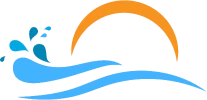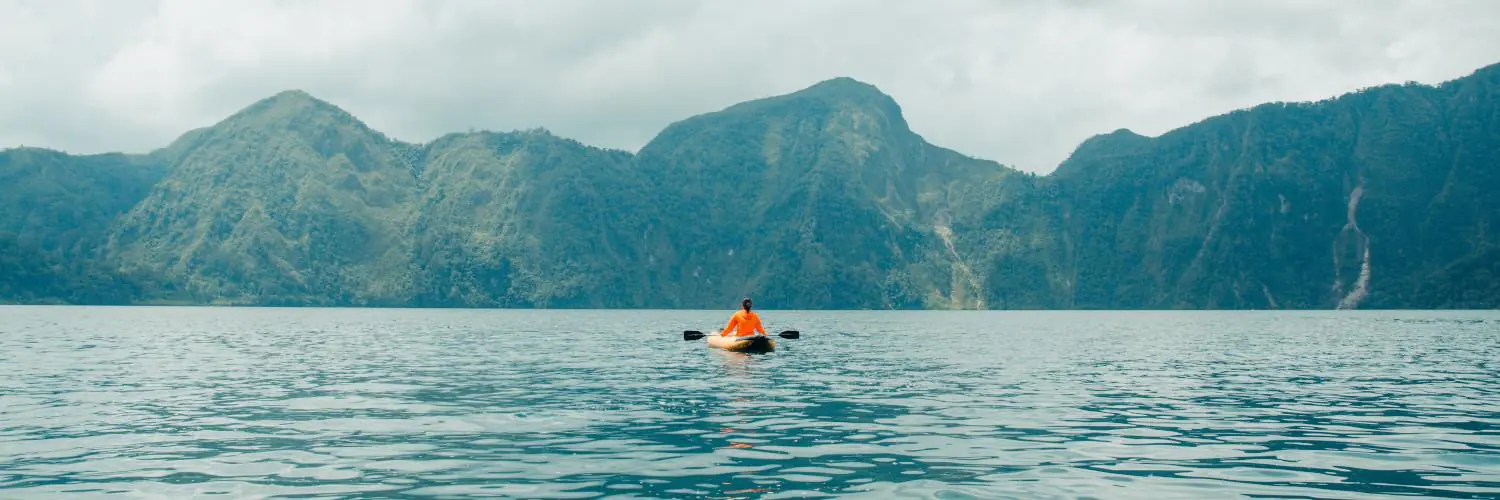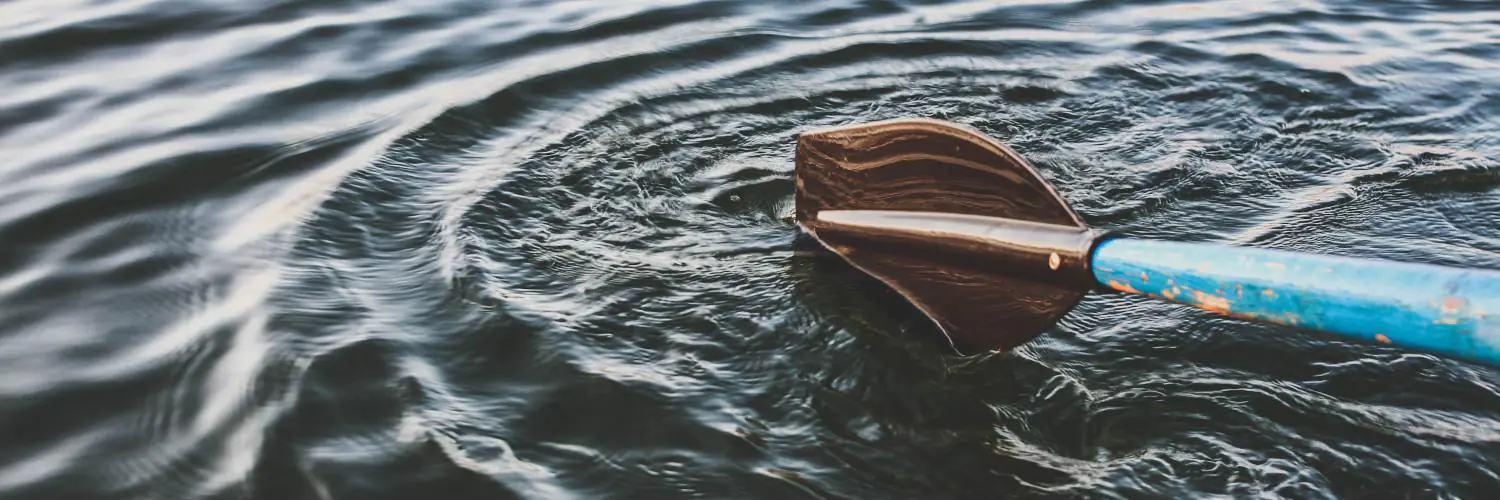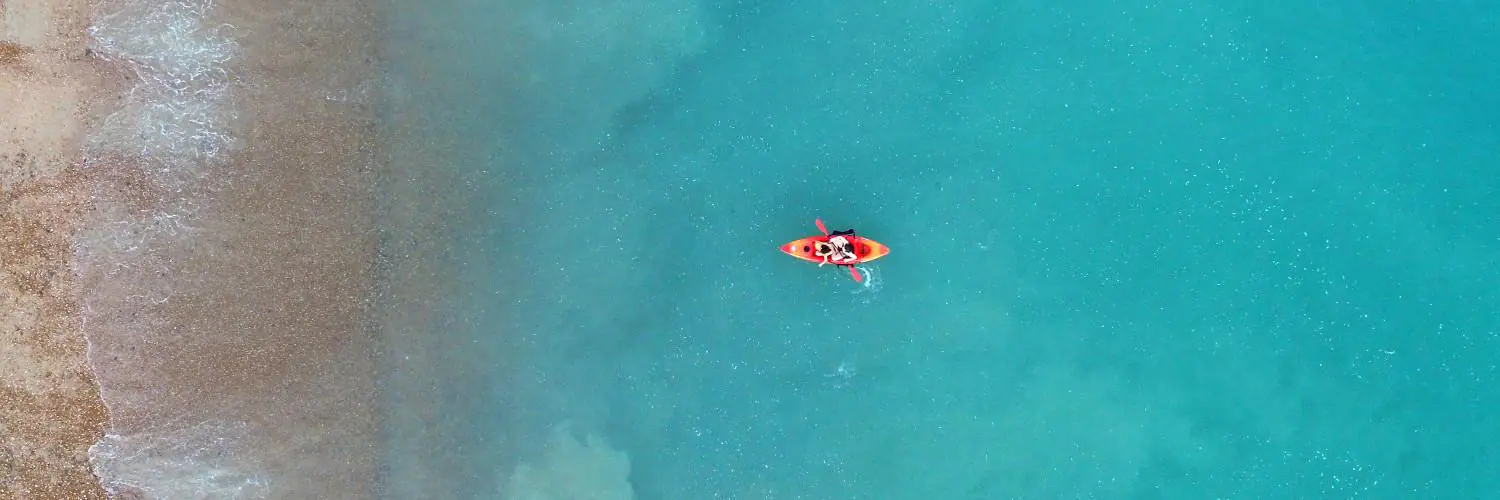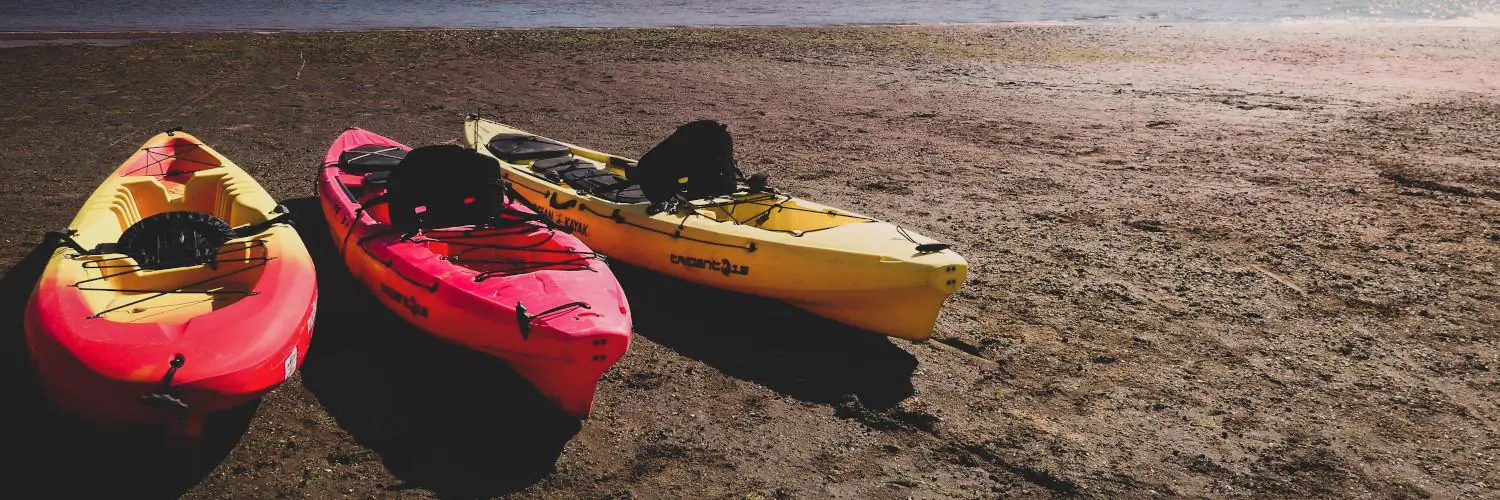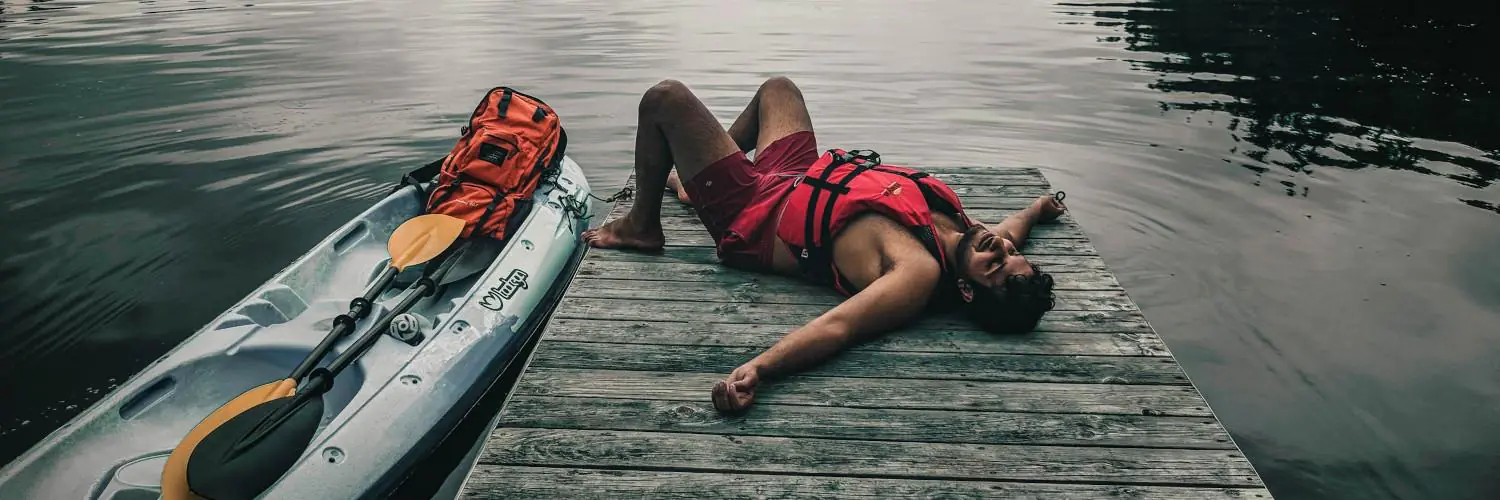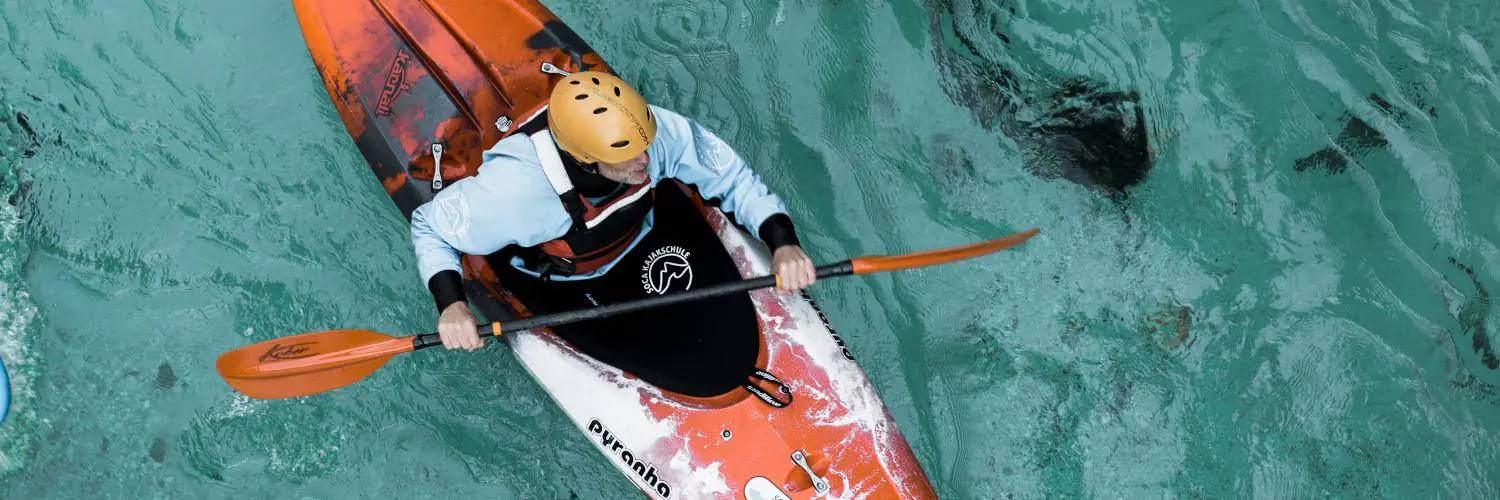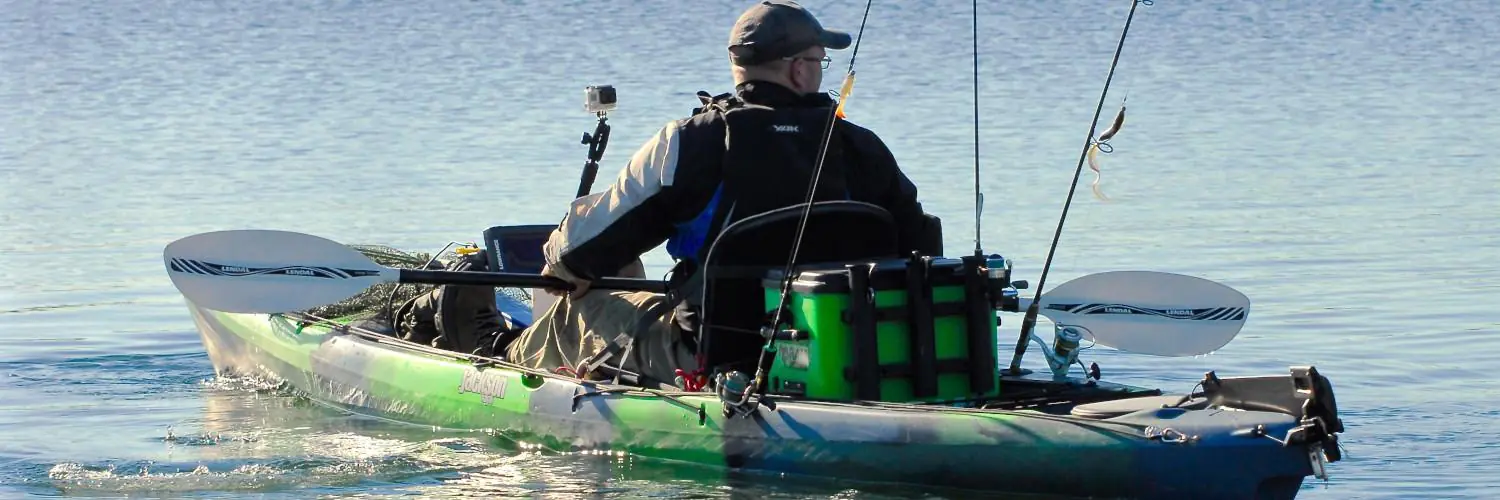Kayak fishing in Washington State is a popular way to explore the state’s rich lakes, rivers, and coastal waters. From the peaceful lakes of the Cascades to the busy shores of Puget Sound, kayak anglers have access to a wide range of fishing spots that bigger boats can’t always reach. Kayak fishing in Washington offers anglers the unique chance to experience beautiful natural scenery while targeting species like trout, bass, and salmon.
Many people are drawn to kayak fishing because it is simple, affordable, and allows for quiet travel on the water. Washington’s waterways are known for both their beauty and their top-rated fishing, making the state a favorite for both beginners and experts. With so many locations to choose from, there is always a new place to explore.
The mix of outdoor adventure and good fishing keeps anglers coming back. Whether someone enjoys calm lakes or open saltwater, kayak fishing in Washington State gives them endless options and memorable experiences.
Table of Contents
Best Kayak Fishing Locations in Washington State
Washington offers a wide variety of waters, each with unique fishing opportunities. Popular kayak fishing spots include saltwater bays, large urban lakes, scenic island channels, and major rivers known for abundant fish populations.
Puget Sound
Puget Sound is a large inland waterway with diverse fishing options. Anglers often catch salmon, sea-run cutthroat trout, lingcod, and rockfish here. The area provides miles of shoreline near Seattle, Port Angeles, and key parks like Blake Island Marine State Park and Dungeness Spit.
Popular launch sites include Alki Beach Park and Obstruction Pass State Park. These locations offer easy access and sheltered areas for paddling. Tides and currents can shift quickly, so planning is important for safety.
Fall salmon runs attract many kayak anglers. Crabbing and bottom fishing are also common, especially in summer. The Sound’s marine setting includes views of the Olympic National Park and nearby islands, making the experience both productive and scenic.
Lake Washington
Lake Washington sits near Seattle and is popular for both urban access and a strong fishery. Anglers frequently target largemouth and smallmouth bass, yellow perch, and cutthroat trout. The lake also has occasional salmon migrations from the Pacific Ocean.
Public launch areas are available at several city parks including Gene Coulon Park and Magnuson Park. Lake Union, connected to the lake, offers additional fishing spots and kayaking routes close to downtown Seattle.
Spring and summer bring good bass fishing along weed beds and docks. Trout are caught near deeper sections by trolling small lures. Clear, calm mornings are best for avoiding boat traffic. The lake’s location provides city views with easy access for beginners and experienced anglers.
San Juan Islands
The San Juan Islands are located in northwest Washington and provide some of the most scenic saltwater fishing in the Pacific Northwest. Kayak anglers visit to target salmon, lingcod, and flatfish, especially near kelp beds and rocky channels around Orcas and San Juan Island.
Obstruction Pass State Park is a popular launch spot with sheltered waters. Tides, currents, and boat traffic should be carefully considered for safe paddling and fishing. The fishing season is best from late spring through early fall, with Chinook and coho salmon being the main draws.
The islands’ clear water, abundant wildlife, and protected marine parks make this area especially attractive. Anglers may also see seals, eagles, and even orcas while fishing the channels and coves.
Columbia River
The Columbia River is one of the largest rivers in the region and forms much of Washington’s southern border. It is famous for its salmon and steelhead runs, as well as sturgeon, walleye, and smallmouth bass fishing.
Public access points are found near Vancouver, Tri-Cities, and smaller launches along the riverbanks. Certain sections are popular for kayak anglers, especially in calmer backwaters and sloughs. Yakima River, which flows into the Columbia, offers more kayak fishing for trout and bass.
Peak fishing times vary by species, but spring and fall are best for salmon, while summer is good for warmwater fish. The vast size and strong currents mean safety gear is important. The Columbia’s variety of habitats gives anglers plenty of opportunities, from wide channels to sheltered inlets.
Target Fish Species and Seasons
Washington State is home to a wide range of game fish, making it popular for kayak anglers. Fishing opportunities vary by season, and different species are more active at certain times of year.
Trout and Cutthroat Trout
Trout are found in many of Washington’s lakes and rivers, including Rainbow Trout, Brown Trout, and Cutthroat Trout. The Yakima River is known for its excellent wild trout fishing. Spring and early summer are usually the best times to target trout, as the water is cooler and fish are more active.
Cutthroat Trout, a native species, can be caught both in freshwater streams and some coastal areas. Anglers often have success casting small spinners or trolling with flies. Most lakes and ponds open to trout fishing in late April, with fishing staying strong into the early fall. Using light tackle helps when fishing from a kayak due to the quiet approach and easy mobility.
Popular Waters:
- Yakima River
- Lake Chelan
- Green Lake
Salmon and Kokanee
Salmon fishing is a highlight in Washington, especially during the summer and early fall runs. Main target species include Chinook, Coho, and Sockeye Salmon. Rivers like the Columbia and coastal streams provide the best access, but kayakers can also fish near river mouths and estuaries.
Kokanee, a landlocked sockeye salmon, are popular in freshwater lakes such as Lake Sammamish and Lake Chelan. Troll with small lures or spinners, especially during late spring through summer when kokanee are near the surface. For salmon, timing depends on the species. Chinook usually peak mid-summer, while Coho run later into September and early October.
Major Runs:
- Chinook: June to August
- Coho: September to October
- Kokanee: May to July
Other Game Fish
Washington also offers a variety of other game fish, including Largemouth and Smallmouth Bass, Panfish (like Bluegill), and even Sturgeon in the Columbia River. Bass fishing is often best from late spring through early fall, especially in warm, shallow lakes and ponds.
Panfish are available year-round, which makes them a good option for beginners and families interested in kayak fishing. Sturgeon fishing is highly regulated but offers a unique challenge for those seeking larger fish near deep water spots in major rivers.
Notable Locations:
- Columbia River (bass, sturgeon)
- Lake Washington (bass, panfish)
- Potholes Reservoir (variety of species)
Kayak Fishing Techniques and Essential Gear
Kayak fishing in Washington State depends on using safe and practical gear. Having the right equipment and techniques improves success on the water, whether targeting trout, salmon, or going after Dungeness crab.
Recommended Fishing Kayaks and PFDs
Selecting a stable, sit-on-top kayak is key for fishing. These kayaks are easier to get on and off and allow for more freedom to move. Look for models with wide hulls and good weight capacity to handle gear and catches.
Popular options include:
- Old Town Sportsman 120
- Wilderness Systems Tarpon 120
- Hobie Mirage Outback (pedal-powered)
A personal flotation device (PFD) is essential for safety. Choose a comfortable, Coast Guard-approved PFD made for paddling. Make sure it fits well, is not bulky, and has pockets or gear loops. Bright colors add visibility, which is important in busy waterways.
Safety Tip: Always wear your PFD while on the water, not just keep it onboard.
Fishing Rods, Downriggers, and Tackle
Shorter fishing rods between 6-7 feet are easiest to manage on a kayak. Medium-action rods handle a variety of freshwater and saltwater species.
For deep lakes or the Puget Sound, a small kayak downrigger can help reach salmon and trout at depth.
Basic tackle includes:
| Tackle Type | Examples |
|---|---|
| Hooks | Size 6-2/0, barbless if required |
| Sinkers/Weights | Split-shot, sliding sinkers |
| Swivels | Barrel, snap swivels |
| Leader Material | Fluorocarbon, mono |
Secure tackle boxes in waterproof crates or bags. Use leashes for rods to avoid losing gear if the kayak tips.
Bait and Lures
Natural bait like worms, shrimp, and cut herring work well for trout, bass, and salmon. Lures such as spinners, spoons, and soft plastics can also be very effective.
For targeting salmon and trout in deeper waters, trolling with hoochies, dodgers, or small plugs is popular. Surface lures and jigs can attract bass in shallower lakes. Match lure colors to the water’s clarity—bright colors in brown or murky water, natural shades in clear water.
Tip: Keep bait and lures accessible but secured, as space is limited on a kayak.
Kayak Crabbing Strategies
Kayak crabbing offers a different kind of adventure, especially in Puget Sound or Hood Canal. Specialized crab pots or folding traps fit in most fishing kayaks. Attach a long, floating rope and a small buoy to spot your trap.
Use raw chicken or fish carcass as bait for Dungeness or red rock crab. Lower traps in legal crabbing areas and mark their spots with GPS or a buoy. It’s important to check current Washington State crabbing regulations for legal sizes and catch limits. Bring gloves and a sturdy bucket to store your catch safely onboard.
Safety Tip: Avoid strong currents when crabbing from a kayak, and monitor weather conditions before heading out.
Legal Requirements and Safety Guidelines
Kayak anglers in Washington State need to understand the required fishing licenses, follow all fishing rules, and carry the right safety gear. Knowing how to respond to changing weather and water conditions is also important for a safe experience on the water.
Fishing License and Regulations
A fishing license is required for anyone fishing in Washington State, including those fishing from kayaks. Licenses can be purchased online, from licensed vendors, or through the Fish Washington mobile app.
Washington Department of Fish & Wildlife sets specific fishing regulations. These include rules about seasons, allowed species, size limits, and bag limits. Rules can change based on emergency regulations, so it is important to check current requirements before each trip.
Anglers must also follow gear rules. For example, barbless hooks may be required in certain locations. Always have a paper or digital copy of your fishing license when on the water. Ignoring regulations can lead to fines or having fishing privileges suspended.
Safety Equipment and PFD Laws
Every person on a kayak in Washington must have a properly fitting, U.S. Coast Guard-approved personal flotation device (PFD). Children under age 12 are required by law to wear a PFD at all times on the water.
A whistle or other sound-producing device is also required on kayaks. Other recommended equipment includes a waterproof flashlight, dry bag with extra clothes, and a bilge pump or sponge.
Operating a kayak under the influence of alcohol or drugs is illegal. The legal limit matches the state’s driving laws: a blood alcohol content (BAC) of 0.08%. Penalties for Boating Under the Influence (BUI) can include fines up to $5,000 and jail time.
Weather and Water Conditions
Weather in Washington can change quickly, especially on rivers, lakes, and coastal waters. Kayak anglers should always check the forecast before heading out.
Wear layers and bring rain gear when necessary. Cold water is common, even in summer, so dress for the water temperature rather than the air temperature.
Watch for signs of changing weather, such as strong wind or dark clouds. Strong currents, tides, and waves can make kayaking dangerous. Plan to fish in areas suitable for your experience level, and let someone know your plans and expected return time. Bringing a communication device, such as a phone in a waterproof case, is recommended.
Planning Your Kayak Fishing Trip in Washington
To have a smooth kayak fishing trip in Washington, it is important to prepare for rentals, overnight stays, and chances to see local wildlife. Each factor can make the experience safer and more enjoyable for visitors.
Kayak Rentals and Guided Tours
Many popular spots in Washington, such as Orcas Island and Pierce County, offer kayak rentals for beginners and seasoned anglers. Rental shops often have fishing kayaks with rod holders and storage space. Some outfitters let guests rent by the hour or by the day and may offer discounts for groups or longer rentals.
Guided kayak fishing tours are a great way for newcomers to stay safe and learn local rules. Most tours include gear, safety equipment, and the guidance of an experienced local. Guides often know about local fish, the best spots, and changing weather patterns. Booking ahead is suggested, especially in summer. Some companies even offer custom fishing trips that target species such as salmon or bass.
Popular Rental Features:
- Single or tandem kayaks
- Life jackets and paddles
- Fishing accessories
- Delivery to launch sites
Lodging and Campsites Near Top Locations
Lodging options near fishing areas range from rustic campsites to comfortable lodges. Many state parks in Washington, such as those near Orcas Island or around the Puget Sound, have both tent and RV sites with easy water access. These are good choices for people who want early or late fishing hours.
Motels and vacation rentals near the water are also common, offering amenities like kitchens and gear storage. Some accommodations partner with local kayak rental shops for package deals or guided tour discounts. It is a good idea to book early in peak fishing season, usually from late spring through early fall, when demand is high.
Recommended Lodging Types:
- State park campgrounds (with showers and hookups)
- Cabins or lodges by lakes or bays
- Local hotels with kayak-friendly features
Local Wildlife and Whale Watching Opportunities
Kayak fishing in Washington often brings close encounters with wildlife. Anglers might see bald eagles, seals, and various seabirds. Whale watching is a unique highlight, especially near the San Juan Islands and Orcas Island, where orcas and gray whales can sometimes be spotted from a kayak.
Paddlers should keep a safe distance from all wildlife and follow local guidelines. Spring and summer are the best times for whale watching, especially in the waters between the San Juan Islands. Some guided kayak tours are focused on wildlife viewing and are ideal for those interested in seeing whales along with fishing.
Common Wildlife Sightings:
- Orcas and gray whales
- Harbor seals
- Bald eagles
- River otters
